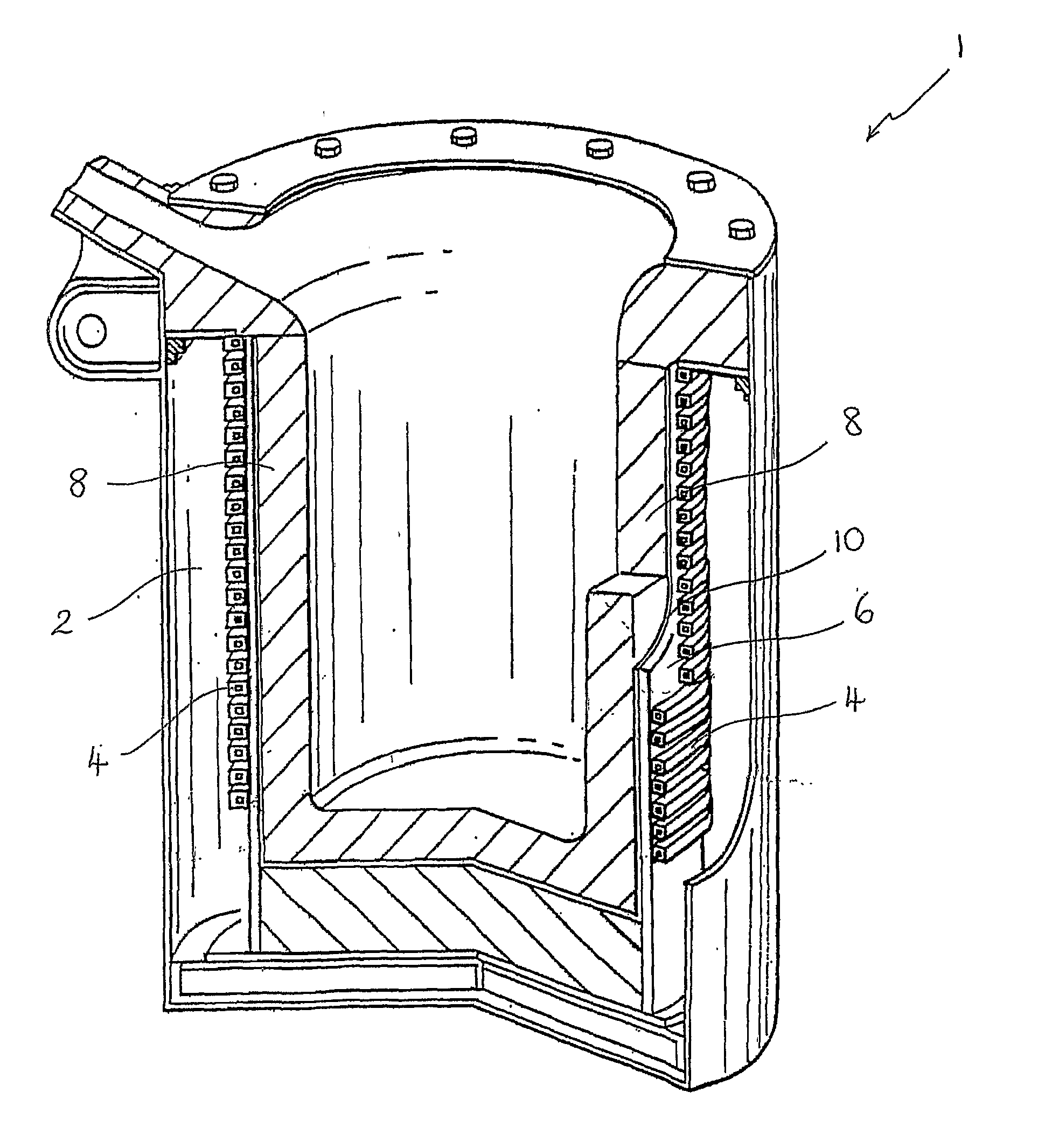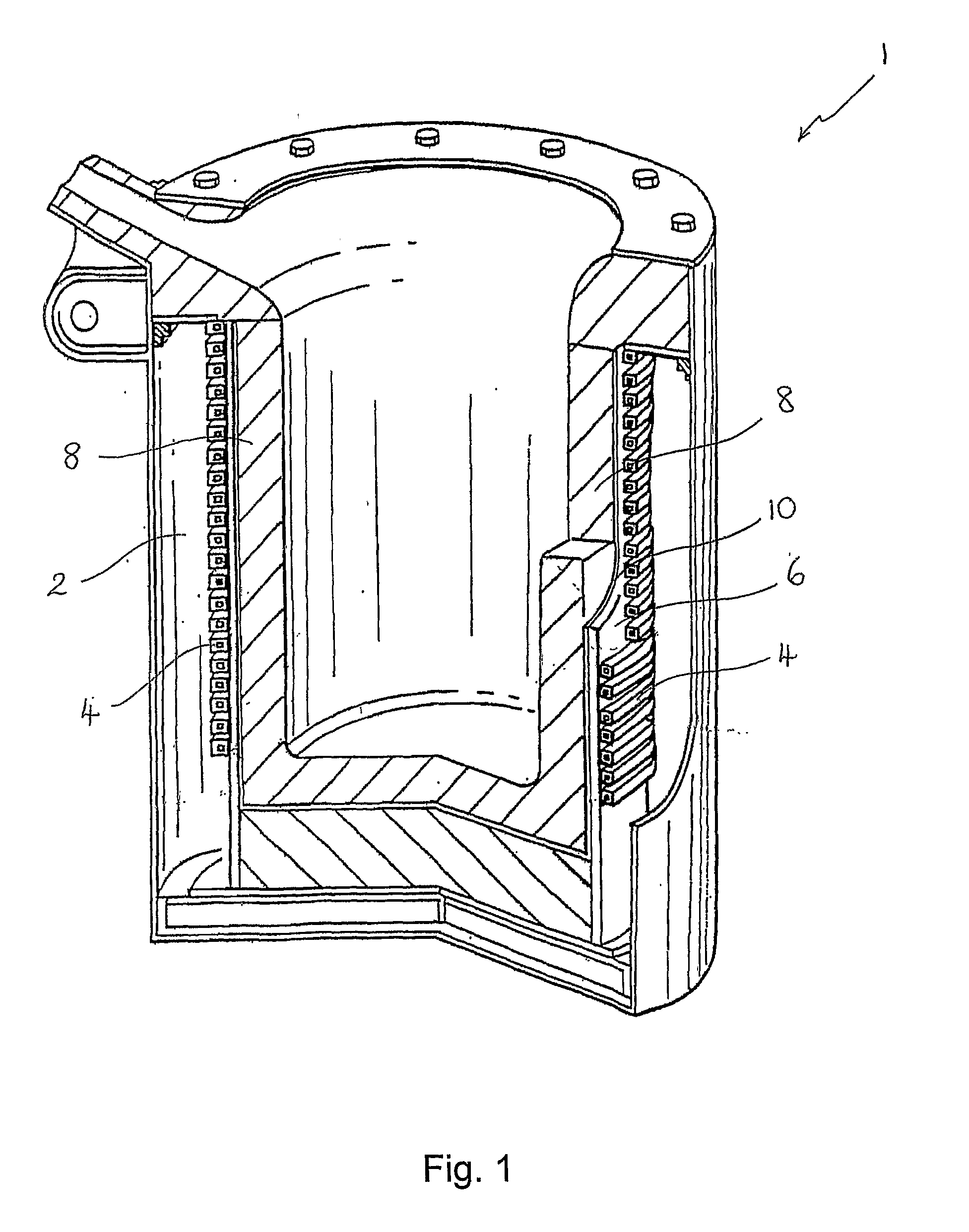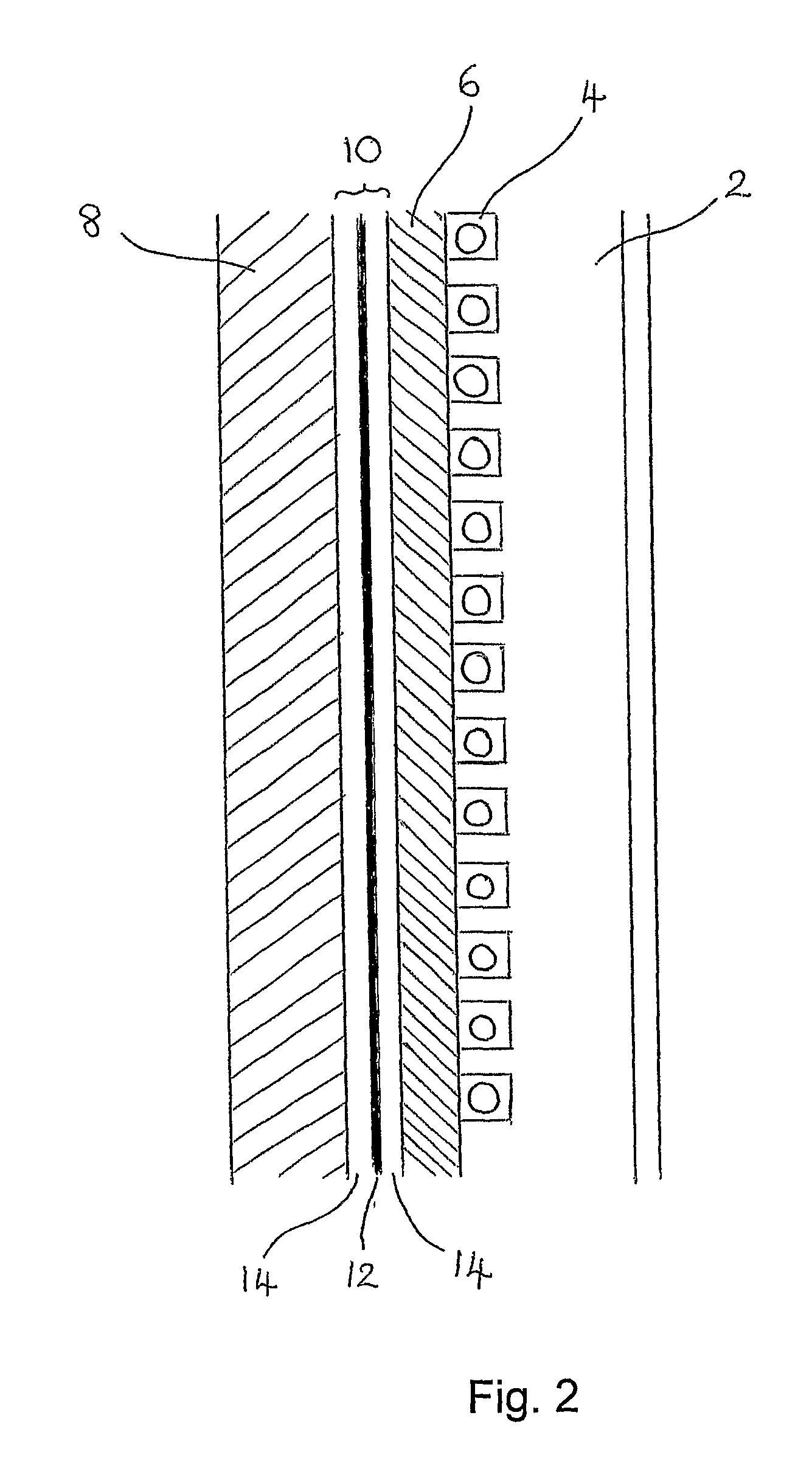Furnace lining
- Summary
- Abstract
- Description
- Claims
- Application Information
AI Technical Summary
Benefits of technology
Problems solved by technology
Method used
Image
Examples
Embodiment Construction
[0022]FIG. 1 shows a typical coreless induction furnace 1 comprising an outer jacket 2, with a water-cooled induction coil 4 within the jacket. The coil 4 is generally made of copper. On the inside of the coil 4, there is a thin layer of refractory plaster, usually 8-10 mm thick, called the coil grout 6 which forms a smooth surface on the inside of the furnace 1, as well as protecting the coil 4.
[0023]To form a crucible 8, a cylindrical former (not shown) typically of a diameter 200-250 mm smaller than the coil 4 is temporarily placed inside the furnace and refractory sand is rammed into the space between the coil grout 6 and the former. The refractory sand is then compacted in a conventional manner.
[0024]A lining material 10 is provided between the coil grout 6 and the crucible 8, the construction and function of which will be described below.
[0025]The lining material 10 is a laminated structure comprising a thin metallic foil layer 12 interposed between two support layers 14, as s...
PUM
| Property | Measurement | Unit |
|---|---|---|
| Thickness | aaaaa | aaaaa |
| Thickness | aaaaa | aaaaa |
| Thickness | aaaaa | aaaaa |
Abstract
Description
Claims
Application Information
 Login to View More
Login to View More - Generate Ideas
- Intellectual Property
- Life Sciences
- Materials
- Tech Scout
- Unparalleled Data Quality
- Higher Quality Content
- 60% Fewer Hallucinations
Browse by: Latest US Patents, China's latest patents, Technical Efficacy Thesaurus, Application Domain, Technology Topic, Popular Technical Reports.
© 2025 PatSnap. All rights reserved.Legal|Privacy policy|Modern Slavery Act Transparency Statement|Sitemap|About US| Contact US: help@patsnap.com



